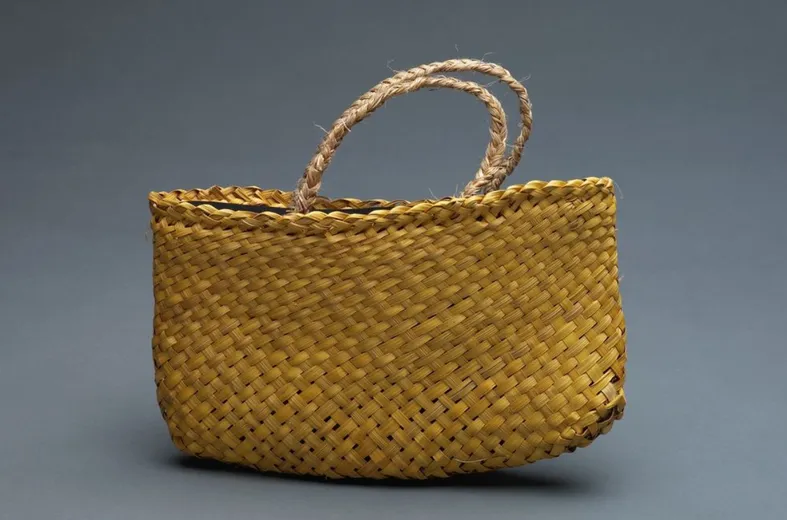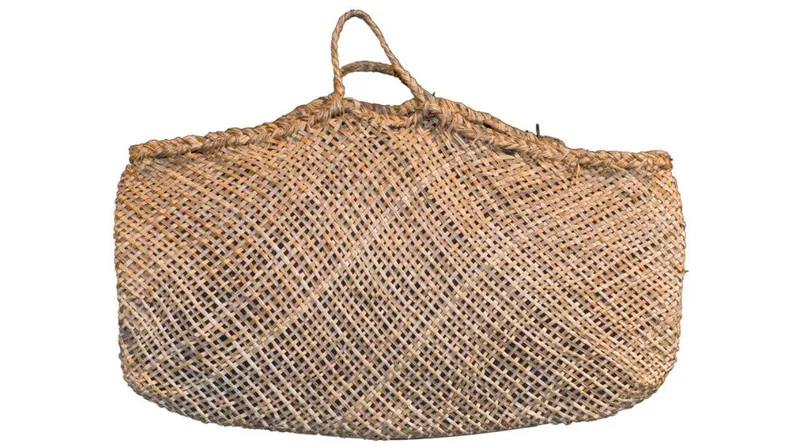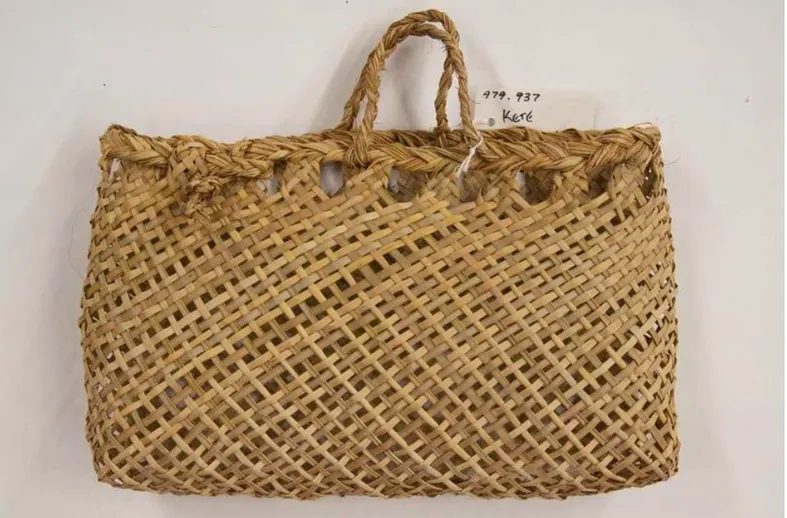By Whina Te Whiu, Manager, Te Ahu Museum and Archives
My most cherished memories are those summers spent at the beaches back home in Hokianga. Exploring the numerous estuaries within the harbour itself or braving the untamed waters of the rugged west coast, those days were filled with whānau, wai kaukau (swimming) hi ika(fishing), kohi kaimoana (gathering seafood) and te ahi tunu kai (cooking on the open fires). It was magic.
Before white buckets became fashionable, we used to gather kai in the kete my nanna Huihana crafted. Her kete were simple, a loose weave called taki-tahi, yet robust, woven with care and swiftly put together. They possessed a practical elegance, easily repaired when needed. Each one bore its own character, with subtle yet discernible distinctions that made them truly special.
The smallest of her kete, the gaps in between each weave were visibly small like buttonholes. This particular kete was reserved for the delicate task of gathering karahu (mud snails) in the mangroves near Te Rangi.
Moving up in size, the next kete had a more elongated shape, its weave allowing glimpses of sunlight to filter through. This one was dedicated to harvesting pipi, once abundant near Te Karaka.
And then there was the largest of the three kete, its spaciousness tailored for the bounty of tuatua, toheroa, and kutai at Mitimiti. Sadly, the toheroa population faced near extinction in Mitimiti due to the relentless exploitation by commercial trucks, which harvested tons daily for overseas canning in the late 1940s to 1950s. A practice that significantly contributed to their depletion.
Each kete was gently fashioned by my nanna's thin, arthritic fingers, skilfully weaving together strands of pingao harvested from Mitimiti. Pingao, a naturally resilient cutting grass, was chosen for its ability to withstand exposure to saltwater, making it the perfect material for crafting these cherished baskets.
Our kete were truly remarkable, especially when it came to handling muddy kaimoana. With a gentle stroll into Tangaroa, we would rinse the karahu directly inside the kete, allowing the mud and saltwater to effortlessly drain away. The ingenious design of these baskets ensured that even the messiest of tasks could be managed with ease.
There are some stunning examples of kete kai\kete pingao shared on Kōtuia. One particularly captivating kete pingao from Te Papa's collection bears a resemblance to my nanna's smallest kete used for gathering karahu. Featuring a striking flaxen/gold colour, small in size, and unique handles with a buttonhole loose weave near the bottom. However, this specific item appears to have a lining and intended for a different purpose.

Elaborate kete pingao, displaying flaxen/gold tones and intricate weaving methods, celebrating creativity and the beauty of nature. From the Museum of New Zealand Te Papa Tongarewa collection
Among my favourites are the two kete kai crafted from harakeke originating from Puke Ariki in Taranaki, a place intricately linked to my nanna's paternal lineage. Their design and craftsmanship evoke memories of my nanna's own creations, stirring emotions that motivate me to share this poignant story.

This beautifully woven harakeke kete, is rectangular, bearing Taki-tahi pattern and open weave, adorned with whiri detailing. Used for gathering mataitai or taewa, reflecting my Nanna's heritage. From the Puke Ariki collection

Stunning large rectangular harakeke kete with Taki-tahi open weave. Thick whiri top edge and handles, perfect for gathering food. From the Puke Ariki collection